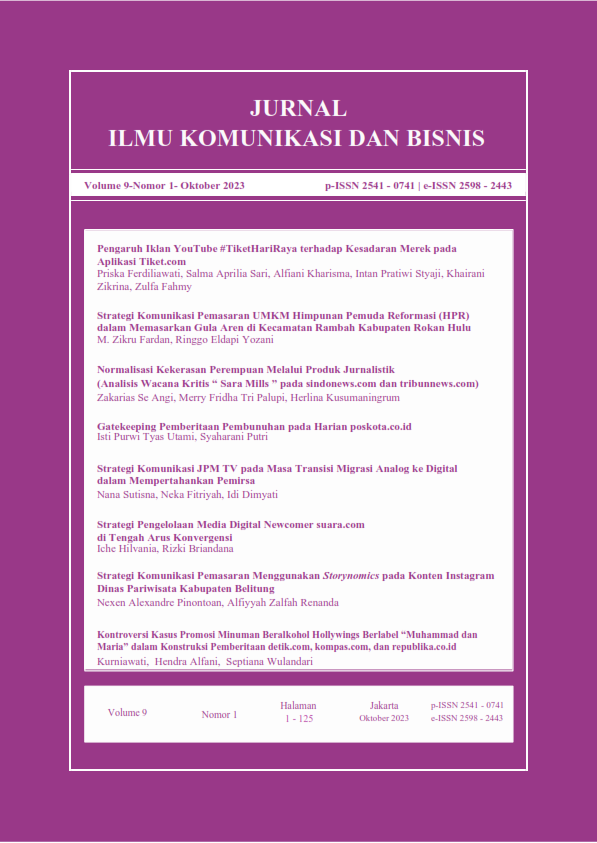Strategi Komunikasi JPM TV Pada Masa Transisi Migrasi Analog ke Digital dalam Mempertahankan Pemirsa
DOI:
https://doi.org/10.36914/b66xcz63Keywords:
JPM TV, Migrasi, Digitalisasi, Strategi KomunikasiAbstract
JPM TV's migration from an analog system to a digital system is part of the mandate of Law no. 32 of 2002 concerning Broadcasting and Law no. 11 of 2020 concerning Job Creation. The migration process is constrained by technological and non-technical issues. The theory used is the basic theory of communication, starting from the nature of communication to the purpose of communication to change behavior. The study starts from planning, organizing, implementing to evaluating from an empirical perspective or conditions that occur during the analog to digital migration transition period based on the Action Formulation theory developed by John Greene. The study method uses descriptive qualitative to get the meaning of generalizations with a postpositivistic paradigm to find the complexity of truth. Research observations were made in three JPM TV offices, Pandeglang Regency, Serang City, Banten Province and Jakarta. From the results of data processing, it was found that JPM TV's communication strategy planning was very dependent on the implementation of government regulations which were still constrained, including the non-distribution of STB. The management of JPM TV's broadcast programs during the transition from analog TV to digital TV migration has changed the characteristics, competition system, form and model of broadcasting innovation, business and marketing strategy in a society that is not yet fully familiar with digital systems.










